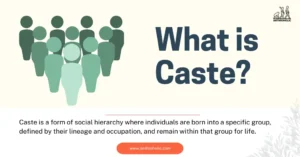AI Answer Evaluation Platform Live Now. Try Free Answer Evaluation Now
Comparing Humans and Apes
As two closely related groups in the animal kingdom, humans and apes share many similarities and differences. This article provides a comprehensive comparison between these two groups by examining their physical, cognitive, and social attributes.

Introduction
Apes are a group of primates that include gorillas, chimpanzees, bonobos, orangutans, and gibbons. Humans, or Homo sapiens, are also primates and are closely related to the great apes. Despite the close genetic relationship, humans and apes exhibit significant differences in their physical features, cognitive abilities, and social behavior.
Physical Differences
Humans
- Bipedal locomotion
- Relatively hairless body
- Flatter face with smaller brow ridges
- Larger brain-to-body size ratio
- Less pronounced sexual dimorphism
Apes
- Quadrupedal or knuckle-walking locomotion
- Body covered in thick hair
- Protruding face with prominent brow ridges
- Smaller brain-to-body size ratio
- More pronounced sexual dimorphism
Cognitive Abilities
Humans
- Advanced problem-solving and abstract reasoning
- Complex language capabilities
- Use of symbols, such as writing and mathematics
- Creation and utilization of tools for a wide range of purposes
- Cultural transmission of knowledge across generations
Apes
- Basic problem-solving and reasoning abilities
- Limited vocal communication with distinct calls
- Some species show ability to learn sign language
- Use of simple tools for specific tasks, such as termite fishing
- Limited cultural transmission of knowledge
Social Behavior
Humans
- Highly social beings with complex social structures
- Formation of communities, tribes, and nations
- Collaboration and cooperation in large groups
- Wide range of emotions, empathy, and moral behavior
- Development of cultural practices, rituals, and traditions
Apes
- Social animals with varying group sizes and dynamics
- Formation of groups or troops for protection and resource sharing
- Cooperation and collaboration within the group, primarily for foraging
- Display of basic emotions, empathy, and some level of moral behavior
- Development of basic cultural practices and traditions within groups
| Attribute | Humans | Apes |
|---|---|---|
| Locomotion | Bipedal locomotion | Quadrupedal or knuckle-walking locomotion |
| Body Hair | Relatively hairless body | Body covered in thick hair |
| Facial Features | Flatter face with smaller brow ridges | Protruding face with prominent brow ridges |
| Brain-to-body Size | Larger brain-to-body size ratio | Smaller brain-to-body size ratio |
| Sexual Dimorphism | Less pronounced sexual dimorphism | More pronounced sexual dimorphism |
| Problem-solving | Advanced problem-solving and abstract reasoning | Basic problem-solving and reasoning abilities |
| Communication | Complex language capabilities | Limited vocal communication with distinct calls |
| Symbols & Writing | Use of symbols, such as writing and mathematics | Some species show ability to learn sign language |
| Tool Use | Creation and utilization of tools for a wide range of uses | Use of simple tools for specific tasks, such as termite fishing |
| Cultural Transmission | Cultural transmission of knowledge across generations | Limited cultural transmission of knowledge |
| Social Structure | Highly social beings with complex social structures | Social animals with varying group sizes and dynamics |
| Group Formation | Formation of communities, tribes, and nations | Formation of groups or troops for protection and resource sharing |
| Cooperation | Collaboration and cooperation in large groups | Cooperation and collaboration within the group, primarily for foraging |
| Emotions & Morality | Wide range of emotions, empathy, and moral behavior | Display of basic emotions, empathy, and some level of moral behavior |
| Cultural Practices | Development of cultural practices, rituals, and traditions | Development of basic cultural practices and traditions within groups |
Conclusion
Despite sharing a close genetic relationship, humans and apes exhibit significant differences in their physical attributes, cognitive abilities, and social behavior. While humans have developed advanced problem-solving, communication, and cultural transmission abilities, apes possess more basic cognitive and social skills. Understanding these similarities and differences can provide valuable insights into human evolution and the development of our unique characteristics.



